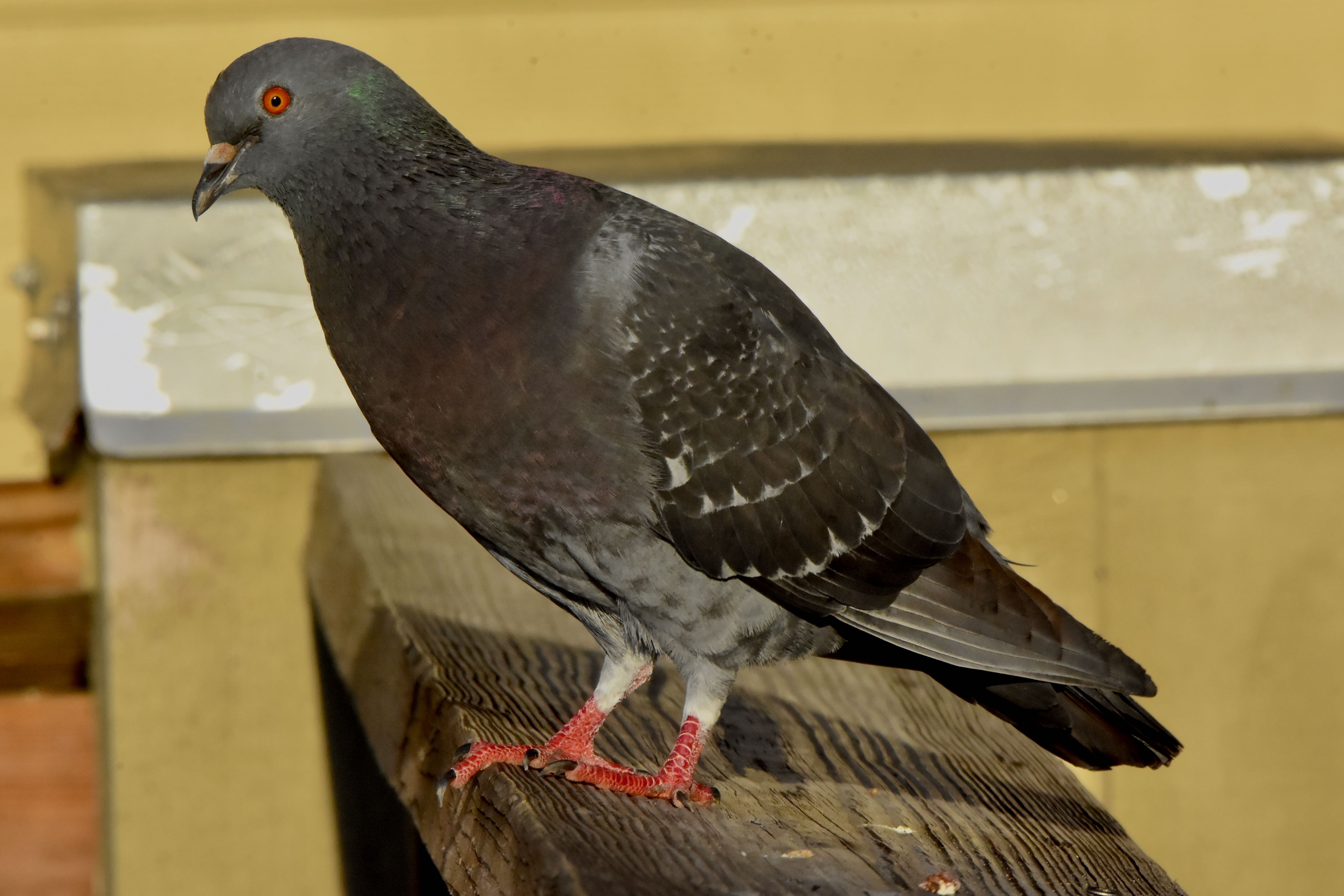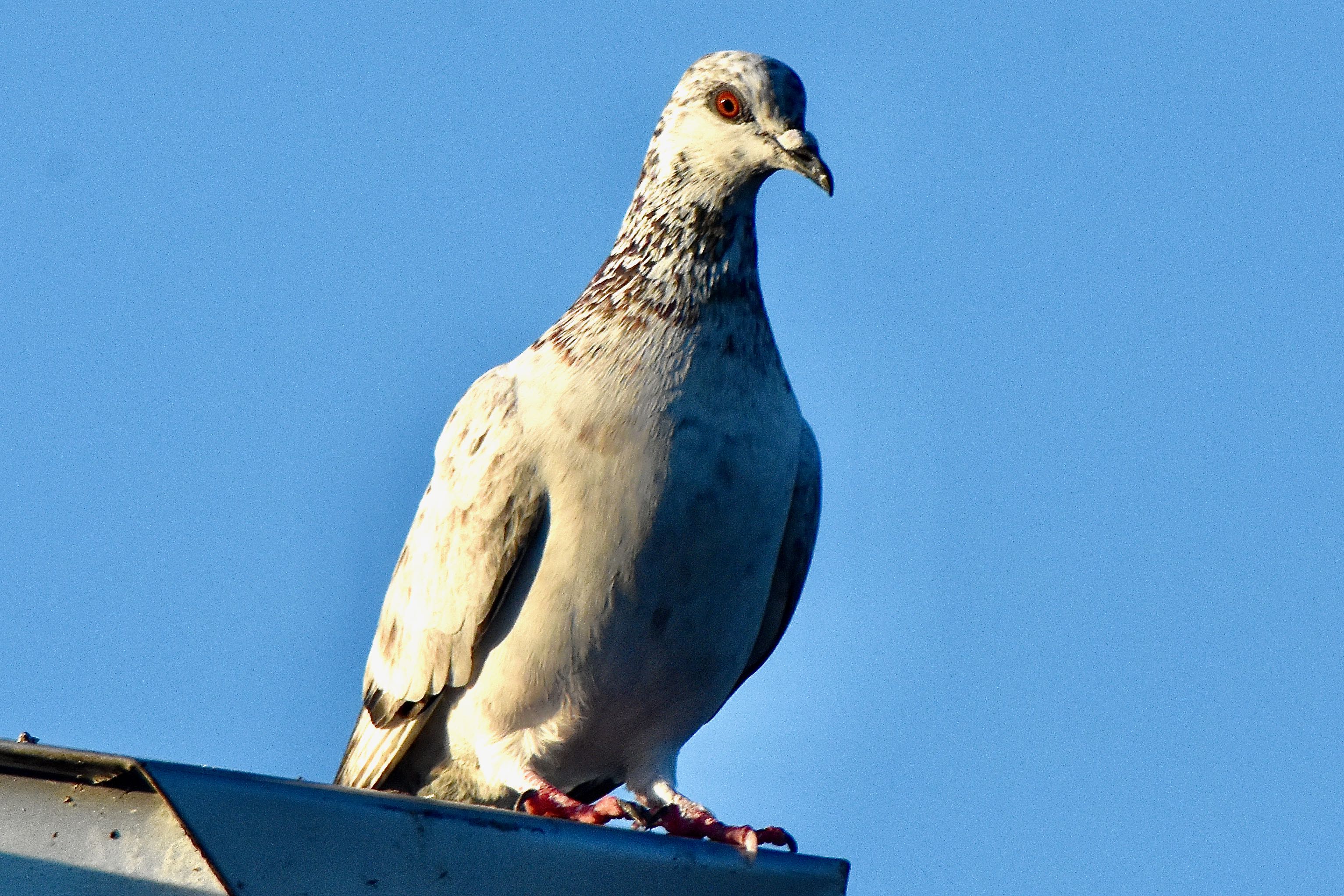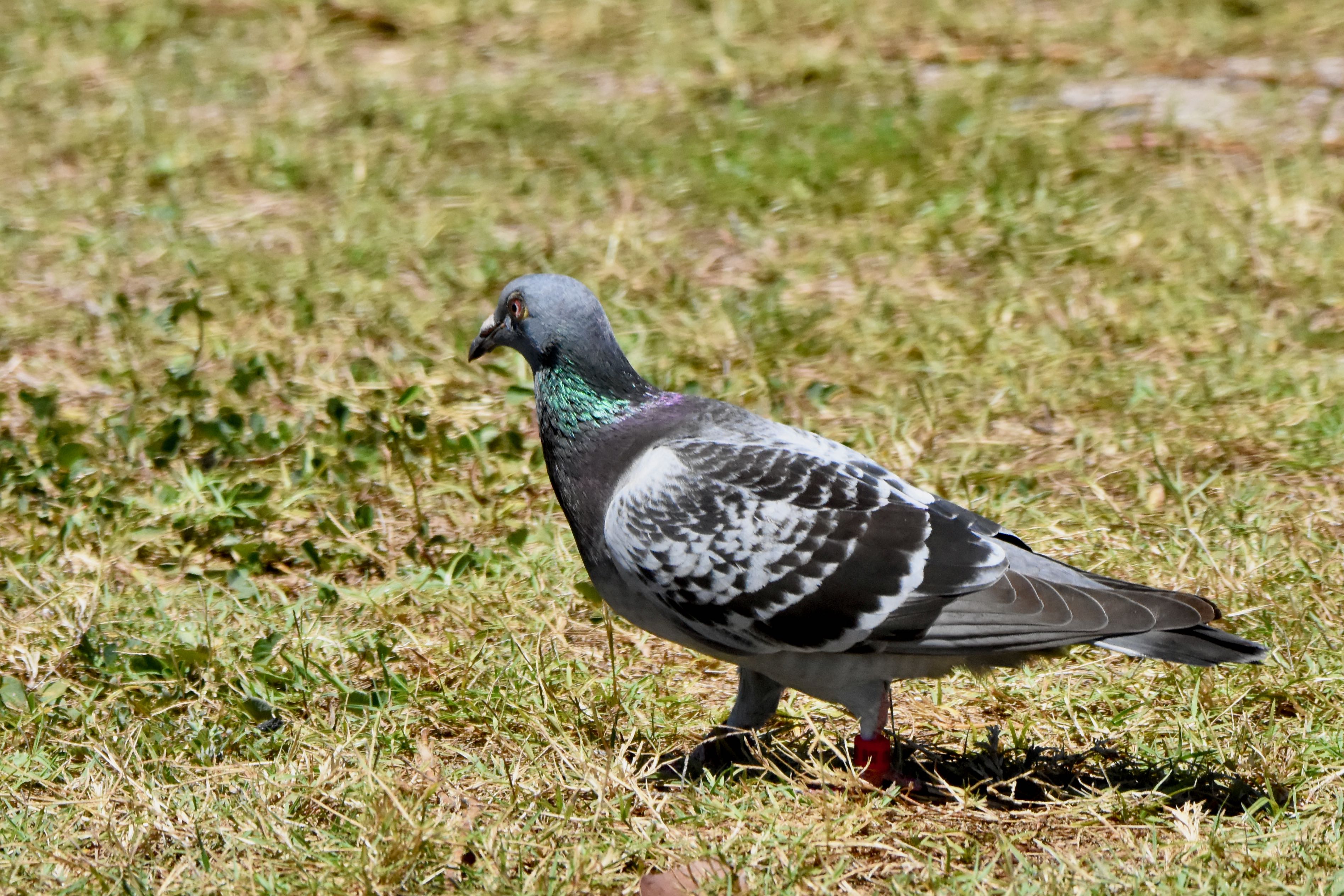
Rock pigeon, photographed at Green Cay Nature Center, Boynton Beach, Palm Beach County, in April 2017.
The rock pigeon, AKA the common pigeon, has been part of the human fabric for so long that it's easy to take it for granted almost to the point of disdain. But a close look at its story reveals a truly remarkable bird.
Rock pigeons are scientifically known as Columba livia. The birds that we see in our cities and parks are feral pigeons, descendants of pigeons that were domesticated, some thousands of years ago. They are highly adaptable, living year-round throughout much of North America from southern Canada, along Alaska's Panhandle, through all 48 contiguous states, into Mexico, Central America and points south.
They have been used in sport for racing and in war for carrying messages because of their incredible sense of direction and their ability to find their way "home." Some pigeons even have won medals for their wartime feats. Cher Ami was the avian hero of the Meuse-Argonne offensive during World War I, carrying a message that saved a battalion of American soldiers trapped in a pocket amid German lines. Its stuffed body sits in the Smithsonian.
Blindfold a pigeon, transport it hundreds of miles and it will find its way back by sensing the magnetic field of the earth and taking cues from the position of the sun, sounds and smells. On the other hand, rock pigeons have been called rats with wings because of their propensity for carrying disease. They can gather in huge numbers and rain feces everywhere. They also carry fowl mites, fleas, ticks, bed bugs and carpet beetles. They carry bacteria, including strep, salmonella and tuberculosis, plus five fungal diseases, eight viral diseases and 14 parasites. Humans, livestock and other birds are vulnerable.
They are plump birds, with small heads and short feet. They can vary greatly in color but usually have two black wing bands and irridescent feathers on the neck. Their bodies can be as long as 14 inches and their wingspan can exceed two feet.
Wild pigeons — there are populations in Europe, Africa and the Middle East — nest in cliffs, finding nooks, crevices and ledges where they build a platform nest of sticks and straw. Feral pigeons build the same simple nest but on window ledges, gutters, stairwells, abandoned buildings and the like. Males fetch material, females assemble it. Unlike other birds, pigeons don't clean their nests. A pair can have as many as six broods in a year, reusing the same nest over and over and over again, just building on top of the old, with the poop acting like cement.
Clutches are between one and three eggs requiring 18 days of incubation before hatching. Both parents split sitting duties. Both parents also split the chore of feeding their young a protein-rich substance called pigeon milk that is produced in a portion of their esophagus called a crop. The young remain nest bound for 25 to 32 days, longer when the weather is cold.
According to Cornell's Ornithology Lab, records of humans' bond with pigeons date back 5,000 years to ancient Mesopotamia and Egypt. The connection is so old that it's hard to say with certainty what their original native range might have been. In any case, they're now found in urban areas around the globe.
Rock pigeons arrived in North America in 1606, brought to the French settlement of Port Royal, Acadia, on the site of what's now Annapolis Royal, Nova Scotia. Why they were brought isn't clear from what we've read, but our guess is for food — meat and eggs. Similarly, the first pigeons brought to the United States landed at Jamestown, Va., in 1607.
Genetic studies, however, have found that most North American pigeons are descendants of racing pigeons. According to the Florida Fish and Wildlife Conservation Commission, breeding populations of rock pigeons are found in all 67 counties but pinpointing a date for their arrival in the Sunshine State is difficult to impossible given how ubiquitous they are in the U.S.
Globally, it's estimated that the pigeon population numbers 260 million. According to the International Union for Conservation of Nature, rock pigeons are actually declining in numbers, though not at a rate that would put them at risk for extinction. Their wide range — they're found on six continents — also provides a degree of protection against extinction. On the other hand, wild, or natural, pigeon numbers are difficult to assess because of the constant mixing with feral birds.
So-called carrier and homing pigeons are rock pigeons specially bred to perform the task of carrying messages. Altogether, there are about 350 breeds of rock pigeon, with genetic differences for size, shape, color, bill, bone structure and more, according to genomic sequencing. They've also been bred for their meat (squab) and eggs. They've also been used as pets and for various scientific experiments. Their lifespans are short in the wild — the average is less than three years — but can be much greater in captivity. They're intelligent birds, able to learn the alphabet and have math skills that exceed some primates. They can distinguish human faces. Pigeons give a new meaning to the term, "bird brain."
Rock pigeons until relatively recently were known officially as rock doves, but an agreement between British and American bird scientists changed the name to rock pigeon.
They are members of Columbidae, the family of doves and pigeons.
Green Cay Nature Center



